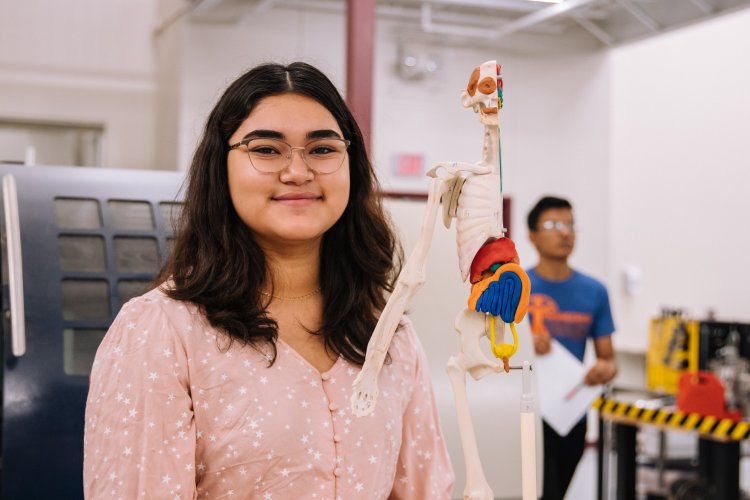Tips for Educators
5 Easy Steps To Gamify Learning
- May 12, 2022
- 0
- 1827

Boredom can negatively affect your students’ zeal to learn and even create a fear of school. 30% of students cite lack of interaction with the teacher as one of the primary reasons for boredom. Additionally, around 75% of these students also had complaints with the learning material assigned to them. This demonstrates the need for a more engaging teaching approach. Gamification is a case in point.
Gamification incorporates various gaming elements like reward-based systems or role-plays. Students learn better when there’s fun involved, which is why this technique works so well. By including elements like point scoring, healthy competition and rules of play, teachers can see skyrocketing student engagement (and retention). In fact, Gamification has been linked to a 50% improvement in student productivity. So, without further ado, let’s have a look at the best five ways to gamify learning. You can either stick to any one or introduce a combination of different approaches for the best learning experience.
1. Build a Narrative with Quests & Missions
Imagine solving algebra questions to guess the coordinates of a lost treasure. Sounds like a fun way to learn math, right? Students respond really well to missions like this - storytelling allows them to envision themselves in similar situations and helps them grasp their lessons faster. They feel more connected with the topic.
When starting a new topic, use narratives combined with quests as an icebreaker. For example, while teaching about the solar system, group your students and assign different planets to them. Create missions like finding the most abundant element on the respective planet using clues hidden in the classroom. The winning team will get a hint for the next mission.
2. Track Progress Using Leaderboards
Leverage leaderboards to instil a healthy dose of competitiveness. Typically, they display the total number of points each student has gained, inspiring everyone to work harder. This also creates scope for a real-time feedback process, where students can instantly see the points they’ve been awarded for certain activities. Spice up your leaderboard with badges to make it more interactive.

3. Gamify the Study Environment
There are hundreds of ways to gamify a study environment - you just need to get a little creative. If science is your subject of expertise, add tangible planet props in the classroom or volcano eruption models, and quiz your students about them. English teachers can write a ‘word of the day’ on the classroom chalkboard and ask students to write down the meaning on chits of paper with their names.
Conduct a lucky draw with the students who answered correctly, and give them a reward or points that can be applied to something meaningful. The more the student can interact with the subject, the better. Gamified classrooms can spark excitement, curiosity and participation within students, so don’t skip out on this step.
4. Introduce Levels for Demonstrating Mastery
Allow students to level-up everytime they learn something new. This can help students track their growth and understand where they stand among peers. Bring in the concept of lifelines and power-ups from video games and couple them with levels. So, when a student cannot crack a topic and move up to the next level, you can give them a hint or a resource for assistance. Introducing such elements encourages them to keep working until they crack the code to effective learning. This also helps them understand complex concepts step-by-step with the right feedback. Incorporate a progress bar to show how far each student has reached in learning a particular topic and provide incentives for timely progress.
5. Promote Teamwork
Your students are waiting for the bell to ring and gossip with their friends. So, why not group them together, but for an exciting assignment? Promoting teamwork is a great way to improve social skills and self-confidence in your students. Divide your class into groups and give each one a specific problem to solve. The answers from all the groups can then be used as hints to solve a bigger puzzle, which will require collaboration from the entire class.
Borrowing elements from video games can go a long way in improving students’ scores and engagement. While implementing gamification, you need to change your perception of the topics you teach. For instance, if chemistry is your subject, bring out the Harry Potter in you while taking classes. Refer to chemicals as magical potions and create a narrative around it. Assign personas, go on imaginary tours and pull all the stops to engage your students in a fun learning journey.
Add Comment
Related Blogs

Tips for Educators
Tips To Help Your Students Retain Information Across 4 Subjects
- James Coop...
- Jun 27, 2022
- 0
- 1447

Tips for Educators
Five Fundamental Online Teaching Practices Of Award-Winning Instructor...
- Mounika Sh...
- Jun 8, 2022
- 0
- 1366
Popular Blogs

Tips for Educators
3 Tips To Apply Classical Conditioning In Classrooms
- Natasha Di...
- Apr 25, 2022
- 0
- 21554

Understanding Concepts
4 Reasons Why Skill-Based Learning Is Important For Students
- James Coop...
- Mar 14, 2022
- 0
- 11030

For Parents
Everything You Need To Know About STEAM Education As A Parent
- James Coop...
- Mar 1, 2022
- 0
- 10828











